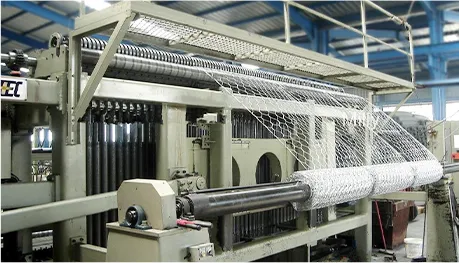-
 Phone:
Phone: -
 Email:
Email:

hexagonal wire mesh
The Versatility and Applications of Hexagonal Wire Mesh
Hexagonal wire mesh, characterized by its unique hexagonal opening pattern, has become an indispensable material in various industries due to its strength, flexibility, and aesthetic appeal. This type of wire mesh is typically made from galvanized steel, stainless steel, or other durable materials, making it resistant to corrosion and wear, which extends its lifespan significantly.
One of the primary applications of hexagonal wire mesh is in the construction industry. It serves as an effective reinforcement material in concrete structures, providing added support and stability. When embedded within concrete, the hexagonal mesh helps distribute loads more evenly, thereby enhancing the overall durability of the structure. This mesh is particularly useful in applications such as retaining walls, foundations, and roadways, where enhanced strength is crucial.
In addition to construction, hexagonal wire mesh finds significant use in agricultural settings. Farmers utilize it for various purposes, including fencing to protect crops from animals and creating trellises for climbing plants. Its hexagonal shape allows for ample airflow and sunlight penetration while still providing a robust barrier against pests. Furthermore, this type of wire mesh can also be used in the production of poultry netting, ensuring the safety and containment of livestock while allowing for effective feeding and management.
Another exciting application of hexagonal wire mesh is in landscaping and garden design. Gardeners and landscapers often use it for creating decorative fences, plant supports, and garden borders. The mesh adds an aesthetically pleasing element to gardens while serving practical purposes. It can also be employed in erosion control, particularly on slopes, as it helps stabilize the soil and prevents runoff. By integrating plants with the hexagonal mesh, it is possible to create living walls that are both functional and visually appealing.
hexagonal wire mesh

Ecological applications of hexagonal wire mesh are gaining traction as well. It can be used to create cages for fish or other aquatic life in sustainable farming practices. The mesh allows for water flow while protecting the inhabitants from predators. Additionally, in environmental restoration projects, hexagonal wire mesh is often used to create protective barriers that encourage the growth of native plant species in degraded areas, promoting biodiversity and restoring habitats.
In the arts and creative sectors, hexagonal wire mesh is utilized in various artistic installations and crafts. Artists appreciate the mesh for its ability to be manipulated into intricate designs while maintaining structural integrity. Whether it’s used in sculpture, architecture, or functional art pieces, the versatility of this material inspires creativity and innovation.
The manufacturing process of hexagonal wire mesh involves drawing and weaving techniques that produce a strong and flexible material. Various coatings, such as galvanization, can enhance its durability and resistance to environmental factors. This adaptability allows it to meet the specific needs of different industries, making hexagonal wire mesh a valuable resource.
In conclusion, hexagonal wire mesh is a multifaceted material with extensive applications in construction, agriculture, landscaping, ecology, and the arts. Its unique characteristics, including strength, flexibility, and aesthetic appeal, make it an ideal choice for various projects. As industries continue to evolve, the demand for innovative materials like hexagonal wire mesh is likely to increase, further solidifying its role as a vital component in modern applications. Whether as a support structure, a protective barrier, or a decorative element, hexagonal wire mesh showcases the perfect blend of functionality and creativity.
-
Wire Mesh for Every Need: A Practical SolutionNewsJul.25,2025
-
Steel Fences: Durable, Secure, and Stylish OptionsNewsJul.25,2025
-
Roll Top Fencing: A Smart Solution for Safety and SecurityNewsJul.25,2025
-
Cattle Farm Fencing Solutions for Maximum SecurityNewsJul.25,2025
-
Affordable Iron Binding Wire SolutionsNewsJul.25,2025
-
Affordable Galvanized Wire SolutionsNewsJul.25,2025
-
Wire Hanger Recycling IdeasNewsJul.25,2025








